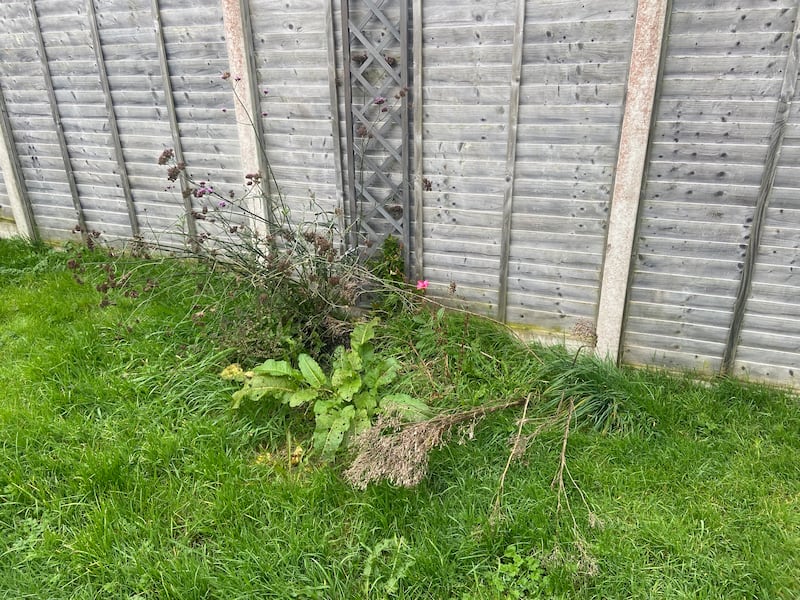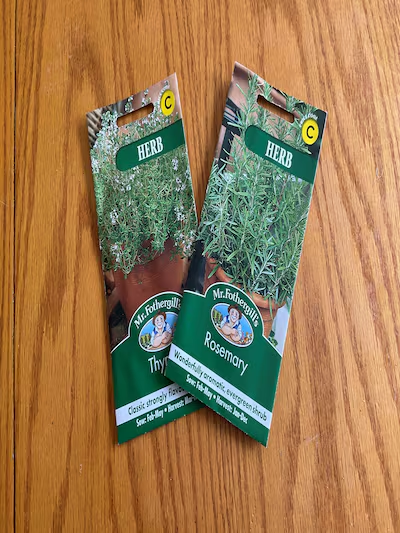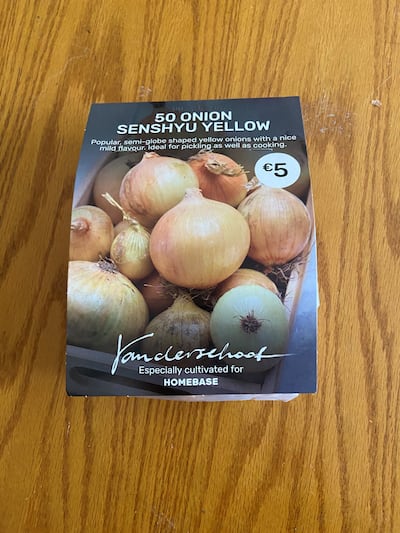As this is my final gardening column of the year, I had plans of signing off with a neat garden ready for a winter of hibernation.
But that, dear reader, would require a measure of foresight, that has so far eluded me in my 32 years on this planet.
It’s not that I haven’t been busy since my last piece at the end of the summer; I was involved in a local play which was a lot of fun, but the poor garden bore the brunt of my neglect.
It’s a mess, the weeds have taken over the flower beds, choking the flowers which were hanging on, thanks to the milder weather we had through October.
READ MORE
[ Growing vegetables is a dying art in Ireland. This man has a solution ]
I am, however, up for the challenge of pulling up the weeds and clearing the flower beds of debris before laying a layer of seaweed fertiliser on the soil – a tip I got from a wonderful woman on a train from Dublin in September. You can use shop-bought fertiliser, which I already had, or do as the woman suggested and get some from your local beach. Be warned though; it can be smelly so make sure you can seal the bags or cover the buckets in your car.

In the meantime, I have been doing a bit of work in preparation for next year.
I have repotted my basil plant, because I read that when you buy herb plants, they are close to getting too big for the pots they are sold in.
It hasn’t grown as well as I hoped, but has given me plenty of leaves for adding to dinners over the past few months.
The first parsley plant died, much to the surprise of absolutely no one, so I bought another. Like the basil plant, I moved it to a bigger pot in the hopes that it fares better this time around.

I have sown the rosemary and thyme seeds in an old egg box with some compost, and they will sit there for a couple of weeks, with plenty of water, until they start to take root and then I will move them to small pots. I have kept the small pots from the herb plants I bought from the shop, so that works out nicely.
Rosemary and thyme are usually sown in from February onwards, but I was told that if I keep my kitchen warm enough, they should thrive. I am fortunate enough to live in an A-rated rented home, so it is warm all year around.
I could have waited, but I felt guilty about leaving the garden to the mercy of the weeds and the elements over the past few months. So, like a guilty parent I have overcompensated. I can always try again if it goes awry.
On another whim, I have also planted some onion bulbs, which I found in Homebase for €5. They are a Senshyu yellow globe variety, and you can sow them up to November, thankfully.

I bought two large pots from Homebase at €4 each, and filled them most of the way up with multipurpose compost, which was €9 in Homebase for 50 litres. I put about five bulbs in each pot – making little two-three inch holes with my fingers and placing the bulbs in nose up. Another layer of compost and a good water and out they went into an area of full sun (whatever that is in Ireland in the winter).
I have also decided to give potatoes a go. There are three sitting in one of my kitchen presses. Once small shoots begin to appear, I will pop them into pots and keep them inside for the first little while.
I am a bit early with sowing potatoes which is why I’m only starting with three. If they fail, I’ll begin again in January with some seed potatoes that are known as “earlies”. They can usually be bought from local garden centres from January to April.
I am looking forward to this part of my journey, particularly considering possible issues with food shortages.
Next time you are in your local supermarket, look at where the tomatoes, pears or your mushrooms are grown. They are invariably not grown in Ireland. Some would argue that is down to climate, but as growers like Michael Kelly from GIY in Waterford have shown, it is possible to grow many fruit and veg in Ireland in your own back garden, with a little time and patience.
One of the ways we can lessen the impact on climate change and our reliance on imports is to eat seasonally. We are so used to eating tomatoes and scallions in December or carrots in July that we give little thought to where or how they arrive in the supermarkets.
Growing my own veg will not solve the problem entirely, as even Irish veg growers are struggling with climate change, but I hope it will make me mindful when I do go to the shops to look out for Irish-grown fruit and veg first.












